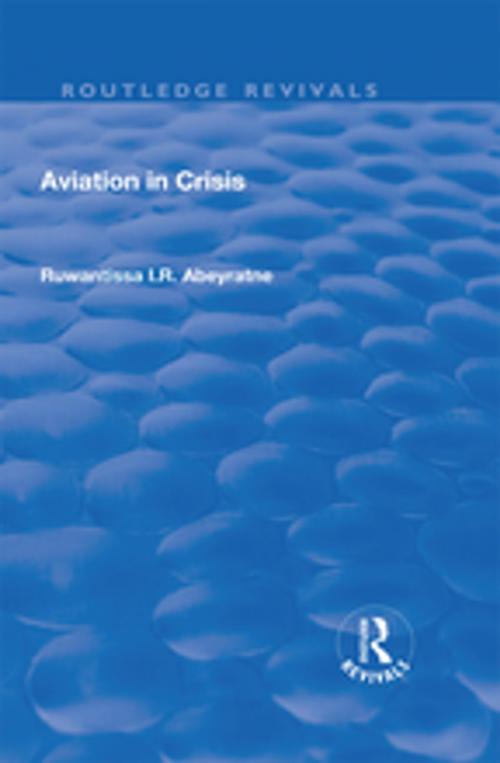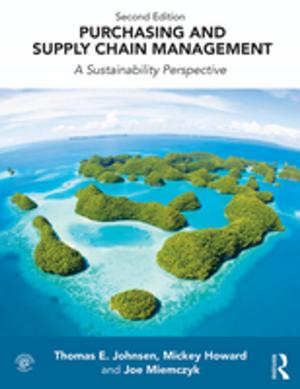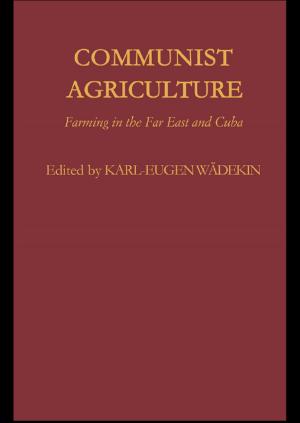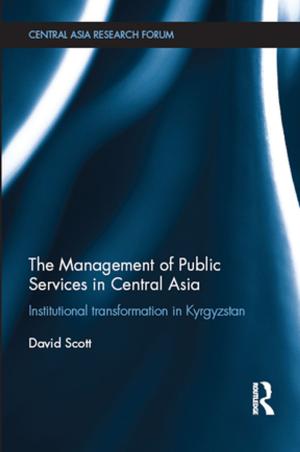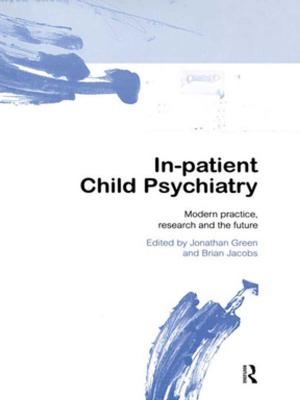| Author: | Ruwantissa Abeyratne | ISBN: | 9781351772174 |
| Publisher: | Taylor and Francis | Publication: | November 22, 2017 |
| Imprint: | Routledge | Language: | English |
| Author: | Ruwantissa Abeyratne |
| ISBN: | 9781351772174 |
| Publisher: | Taylor and Francis |
| Publication: | November 22, 2017 |
| Imprint: | Routledge |
| Language: | English |
This title was first published in 2003. The events of 11 September 2001 defy modern economic theory when addressed in aviation terms. Economic theory would suggest that, once the impact of such events are a thing of the past, and economies are restored to their status quo ante, a rise in the gross domestic product of States to earlier levels would almost inevitably result in increased consumption. This in turn would mean that the demand for air travel would rise to earlier proportions and consumption in terms of air transport services would be restored to normalcy. However, the September attacks on United States' property introduced a unique characteristic through the fear factor that directly impacts the future development of air transport. As a result, the grim task of restoration of passenger confidence stands in the way of economic revival of the air transport industry. Aviation was always in crisis. The air transport industry, even prior to 11 September 2001, although seemingly a glamorous, exciting and prosperous business, never enjoyed sustained periods of profitability. Even among the large carriers, a short bout of profitability would inevitably be followed by a period of downturn in real income. It is simply that this fluctuation in fortune is an ineluctable characteristic of air transport, whose fortunes are dictated by rigid regulation, competition and technological change. If a sustained analysis were to be made of air transport, plain economic theory would no longer be the exclusive discipline for consideration. Rather, all relevant factors have to be taken in context and emerging issues should be analyzed as possible threats to the economic well being of the air transport industry. This book addresses issues in a post-September 2001 context but also analyses issues past and present, with the intent of looking at the future. Four major areas are taken into consideration which were in crisis but are truly impacted by the events of September 2001. These areas relate to crises in the commercial, security, insurance and environmental protection fields. Of these the first and fourth areas are inextricably intertwined, as aircraft noise regulations in various States have a direct impact on aircraft financing, which in turn is linked to demand for air services. A drop in demand for air services would essentially mean that the demand for lease or purchase of new aircraft would drop. When this occurs, air transport enterprises would be more inclined to cut costs and therefore concentrate on using the aircraft already at hand, upgrading them to conform to the The purpose of this book is to view the overall picture of an aviation industry - comprising air transport and other aviation related industries - in crisis, through issues that continue to impact the economic viability of air transport, particularly as a result of the events of 11 September 2001.
This title was first published in 2003. The events of 11 September 2001 defy modern economic theory when addressed in aviation terms. Economic theory would suggest that, once the impact of such events are a thing of the past, and economies are restored to their status quo ante, a rise in the gross domestic product of States to earlier levels would almost inevitably result in increased consumption. This in turn would mean that the demand for air travel would rise to earlier proportions and consumption in terms of air transport services would be restored to normalcy. However, the September attacks on United States' property introduced a unique characteristic through the fear factor that directly impacts the future development of air transport. As a result, the grim task of restoration of passenger confidence stands in the way of economic revival of the air transport industry. Aviation was always in crisis. The air transport industry, even prior to 11 September 2001, although seemingly a glamorous, exciting and prosperous business, never enjoyed sustained periods of profitability. Even among the large carriers, a short bout of profitability would inevitably be followed by a period of downturn in real income. It is simply that this fluctuation in fortune is an ineluctable characteristic of air transport, whose fortunes are dictated by rigid regulation, competition and technological change. If a sustained analysis were to be made of air transport, plain economic theory would no longer be the exclusive discipline for consideration. Rather, all relevant factors have to be taken in context and emerging issues should be analyzed as possible threats to the economic well being of the air transport industry. This book addresses issues in a post-September 2001 context but also analyses issues past and present, with the intent of looking at the future. Four major areas are taken into consideration which were in crisis but are truly impacted by the events of September 2001. These areas relate to crises in the commercial, security, insurance and environmental protection fields. Of these the first and fourth areas are inextricably intertwined, as aircraft noise regulations in various States have a direct impact on aircraft financing, which in turn is linked to demand for air services. A drop in demand for air services would essentially mean that the demand for lease or purchase of new aircraft would drop. When this occurs, air transport enterprises would be more inclined to cut costs and therefore concentrate on using the aircraft already at hand, upgrading them to conform to the The purpose of this book is to view the overall picture of an aviation industry - comprising air transport and other aviation related industries - in crisis, through issues that continue to impact the economic viability of air transport, particularly as a result of the events of 11 September 2001.
